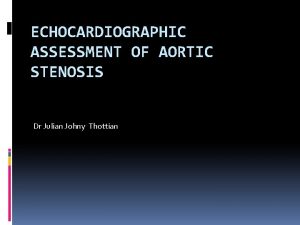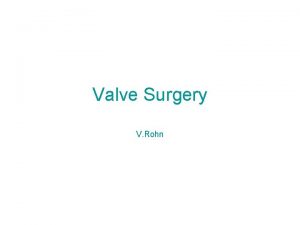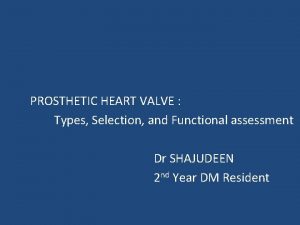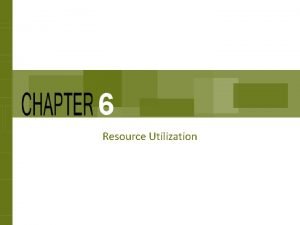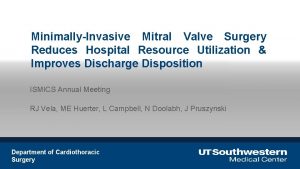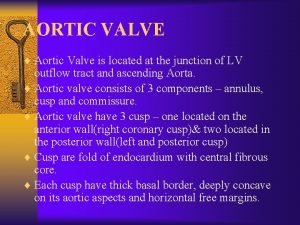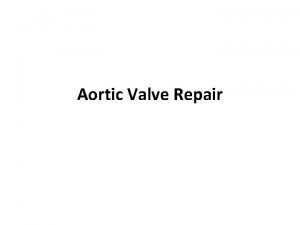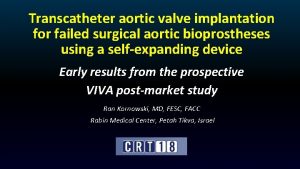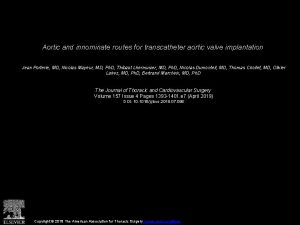MinimallyInvasive Aortic Valve Surgery Reduces Hospital Resource Utilization









- Slides: 9

Minimally-Invasive Aortic Valve Surgery Reduces Hospital Resource Utilization & Improves Discharge Disposition ISMICS Annual Meeting RJ Vela, ME Huerter, L Campbell, N Doolabh, J Pruszynski Department of Cardiothoracic Surgery

Conflict of Interest § The authors have no conflicts or financial relationships to disclose.

Purpose § Minimally Invasive Cardiac Surgery has emerged as a viable alternative against a standard sternotomy approach towards valvular surgery. § Unfortunately, very few non-retrospective studies have been completed to assess differences between minimally-invasive and sternotomy approaches to valvular surgery. § Given our high volume of both minimally-invasive and sternotomy approaches to valvular surgery, we wished to complete a retrospective, propensity matched study between our two surgical approaches.

Methods § We first identified all valvular surgeries during the study period and developed a propensity score to find suitable matched pairs and specified covariates. § Median and interquartile ranges were reported for continuous variables, frequencies and percentages were reported for categorical variables. § Kruskal-Wallis tests were used for continuous and categorical variable comparisons as well as chi square and fisher’s exact test to compare nominal variables.

Results § Of the 522 total valvular procedures, 166 Aortic specific surgeries were identified during the study period. § 128 minimally-invasive and 38 sternotomy approaches. § After creation of a propensity score, matched pairs were assessed and 38 matched-pairs identified. § Quality of the match was assessed using nearest neighbor matching and no dropout was seen for sternotomy approaches indicating excellent matches.

Results – Pre & Post Propensity Matching

Results – Outcomes

Results – Outcomes

Discussion § A minimally-invasive approach to aortic valve surgery yields reduced blood product utilization (intraoperatively and postoperatively) and hospital resource allocation. § Hospital & ICU stay are also significantly reduced compared to patients undergoing a sternotomy approach. § Composite-complication (including SSI, stroke, VTE, pneumothorax or hemothorax requiring intervention, 30 -day mortality, and hospital-readmission) is reduced as well. § A minimally-invasive aproach appears to improve patient’s likelihood of discharge home compared to extended-care, rehabilitation, or nursing home as seen in sternotomy patients.


